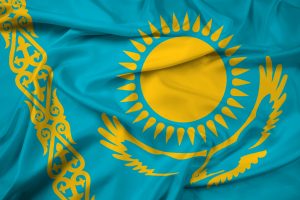On January 11, a handful of United Nations experts condemned the use of force against protesters in Kazakhstan and called on the country to “to halt their unrestrained use of force, including lethal force, against protesters and ensure that an independent and human-rights based investigations of State use of force against protesters is undertaken.”
The experts — which included the special rapporteurs on the promotion and protection of human rights while countering terrorism; on extrajudicial, summary or arbitrary executions; on torture and other cruel, inhuman or degrading treatment or punishment; and on the situation of human rights defenders; as well as the members of the Working Group on discrimination against women and girls — expressed concerns about Kazakh President Kassym-Jomart Tokayev’s “shoot to kill” order and overly broad use of the term “terrorism.”
“Misuse of the word ‘terrorism’ undermines the security of all and cheapens this term which has a specific meaning in international law,” the statement said.
The U.N. experts said that “[t]he expansive branding of protesters as terrorists is a way to use Kazakhstan’s overly broad terrorism legislation that allows for the use of force, including a ‘shoot to kill’ policy, against any individual determined to be a ‘terrorist’… Such wholesale barriers to freedom of expression and assembly premised on terrorism are absolutely contrary to the strict provisions under international human rights law on the right to life.”
The U.N. statement, ironically, runs headlong into Kazakh government statements, which have been emphatic in denying that any force was used against protesters — only against “terrorists.” A statement from Kazakhstan’s Ministry of Foreign Affairs emailed to The Diplomat and other media outlets on January 9 began with a complaint about “one-sided” foreign media coverage. The statement said that after protests in Mangystau region and elsewhere, “The protesters’ demands were fully met.” Then, the statement continues, “the peaceful protests were hijacked by terrorist, extremist and criminal groups to escalate tensions and violence.”
In Almaty, according to the government’s version of events, “Kazakhstan has been subjected to armed aggression by well-coordinated terrorist groups trained abroad… the attackers include individuals who have military combat zone experience in the ranks of radical Islamist groups.”
The problem, of course, is the state has not presented evidence to support that claim, such as the names of the terrorist groups or where they trained abroad. No known terrorists groups have claimed responsibility for the violence. (A video did emerge on Telegram on January 7 showing four masked gun-toting men claiming to be the “Kazakhstan Liberation Front.” On social media, many commented that the speaker’s Russian did not have a Kazakh accent and that Russia has a history of producing such videos for propaganda purposes. Kazakh authorities have not mentioned the group of video directly.)
The government claims to have now arrested 10,000 people, but the names of most of those detained have not been made public. In one case, a Kyrgyz man paraded as a participant, replete with footage of seized guns and booze on state TV, turned out to be a jazz musician. Reports also state that more than 160 people have been killed, but details are thin. Tokayev bizarrely claimed that the “terrorists” took the bodies of their dead comrades from the morgues and off the streets — setting up an excuse for not being able produce evidence of the government’s claims. But one has to wonder: Where have the bodysnatchers now gone?
In stressing that Kazakh forces “never used and will not use armed force against peaceful protesters” as Tokayev did on Twitter after speaking with European Council President Charles Michel, the Kazakh government is painting a picture in which any force used was necessarily used against “terrorists.” This also, paradoxically, satisfies protesters and activists who understandably don’t want to be associated with the violence that overtook events in Almaty.
Over recent years as the number of protests in Kazakhstan grew, the state response has been forceful, yet in ways restrained. After the violence in Zhanaozen in 2011, repression has largely been carried out via manhandling and harassment, not shooting. The smallest protests, including single-person pickets, often resulted in arrests and there are countless videos of Kazakh security forces and police bundling protesters into vans and kettling protesters (as they did for nine hours straight in January 2021).
On January 4, Kazakh security forces used tear gas and stun grenades to disburse protesters in Nur-Sultan and Almaty. This was before any buildings were burned and any talk of “terrorists” emerged. Reports from the ground paint a chaotic picture. As such, efforts to simplify the course of events into a neat narrative in which all the peaceful protesters went home before the shooting and violence began should be viewed with skepticism. This isn’t to say that Kazakh authorities wanted protesters shot, but without more information about those killed we can’t know that no mistakes were made.
In that vein, the U.N. experts called for “an independent, impartial, effective and public investigation” into what happened and for the fair treatment of those detained.

































